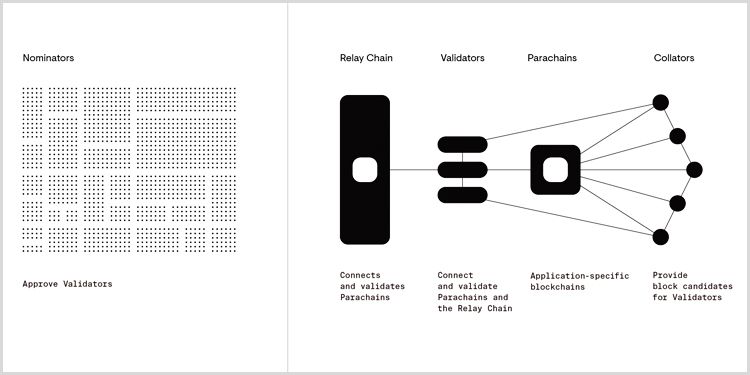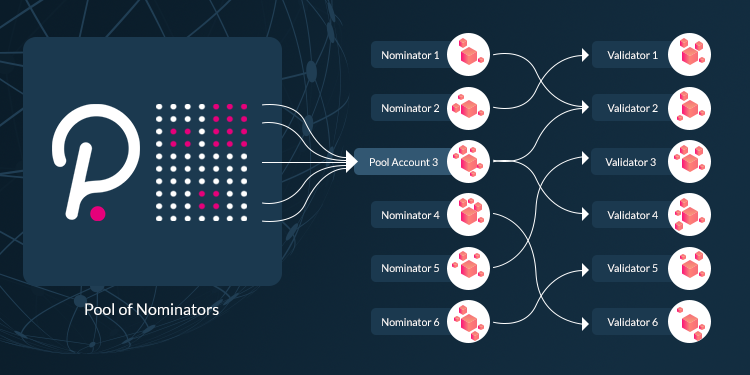Polkadot is the latest blockchain trend that suffices predecessor blockchain challenges such as scalability and low throughput. Known for mushrooming a blockchain ecosystem of its own, Polkadot is well-acclaimed for its heterogeneous technical architecture comprising multi-chain public, private and custom-built blockchains.
Even since the NPoS consensus protocol adoption in Polkadot and Kusama, we have seen a considerable increase in the staking of both networks. However, with the rise in participation demand, clampdowns are added to both networks' staking systems. To understand the restrictions, we must first understand the validator selection process.
So before we head, let's latch on to some terms that ornament this article and guide you to the rest of the story.

Parachain: The custom, project-specific blockchains integrated to the Polkadot (DOT) and Kusama (KSM) networks. These independent blockchains can be customized for any number of use cases and feed into the main blockchain.
Relay Chain: Considered the heart of the Polkadot and Kusama networks; the main blockchain oversees the network's cross-chain interoperability, security and consensus mechanism called nominated-proof-of-stake (NPoS). Relay Chain governs, coordinates, and oversees the functioning of connected parachains and ensures transaction finality.
Nominator: One type of participant node in the staking system of Polkadot. They are responsible for appointing their stake to the validators. By assigning their stake, they can elect the active set of validators and share in the rewards that are paid out.
Validator: Another participant node responsible for validating transactions in Polkadot's parachain blocks by utilizing a consensus mechanism with other validators. Validators earn some rewards in return for helping in securing the relay chain. Validators maintain the system efficiency and participate in voting and forming new blocks in the blockchain.

Now that you're acquainted with the principal heads, here is the rest of the tale.
Polkadot and Kusama use the Nominated Proof-Of-Stake protocol to calculate the active set of validators based on the total number of nominated stakes they support. This includes the verifier's own interest and other token holders who support (nominate) them. Specifically, this protocol divides all the stakes of the nominees and validators into a certain number of stake pools - one per validator - so that the sizes of the stake pools are distributed as evenly as possible. It also allows network users to participate in a regular selection of validators and thus has a direct impact on the active set.
However, determining which validators are always in the active set and which nominators are nominated is a cumbersome task. This results in an extensive graph mapping the nominators to their respective validators. If this chart is too large, WebAssembly cannot process it.
Because all validators have a limited amount of memory.There are limits to how much can be allocated to this task without affecting the remaining usability of the validators. For instance, if the number of nominees increased to about 30,000, the size of this graph would reach a point where it would affect the ability of the nodes to function correctly.
Here pinning the early- said restrictions;
Instead of waiting for failures to occur naturally, "railings" are added to make conservative estimates of what authentication nodes can do. Starting with runtime 9050 (the native version included in Polkadot 0.9.5), two hit limits have been added to the staking. These limitations ensure that the graphics one creates can be quickly processed in WebAssembly.
The first is a strict limit of 20,000 nominees in Polkadot and Kusama. This denotes a condition that only 20,000 nominator accounts can be nominated at a time. As with the number of validators in the active set, this value can be changed by governance.
As far as staking is concerned, a soft limit is also added regarding the minimum stake for which a nominee can be nominated. It is set at 20 DOT in Polkadot and 0.1 KSM (100 milliKSM) in Kusama. Therefore, accounts cannot stake lesser these limits. The accounts may be tied up for a smaller amount but will not be nominated. Polkadot will sweep all the nominating accounts below the threshold limit, preventing them from nominating.
Note: Kusama will not do this first sweep as the current number of nominators is below the new nominator limit.
Nomination Pool: The New Found Advancement

Nomination Pool is the latest add-on to the Polkadot technical architecture that intends to improve the staking deficiencies in Polkadot and Kusama. They are designed to allow members to raise their funds and act as a candidate account ( single nominator). Due to current running restrictions, Polkadot will comfortably handle only 22,500 nominees on the election set. While, the major goal of the NPoS algorithm is to increase the overall stake in the network, it is displayed like Polkadot's staking system nominates the validator with a more significant commitment. Only nominator accounts that support validators in the active set are eligible for staking rewards, leaving out nomination intents from accounts with lower DOT balances.
Nomination Pool is a solution to this dismay. The Nomination pool can be used by members who want to join the staking system with a stake below the dynamic min-active nomination threshold of the network, thus scaling the number of accounts for participation and earnings in the Polkadot staking system.
The newly found experimental ring is an uprising scaling solution for Polkadot’s NPoS system, specifically assisting accounts with fewer funds to stake directly on the relay chain(s) rather than going through a third-party service. Here, each Nomination Pool is perceived as a nominator from the point of view of the NPoS system.
Now that you have understood the Nomination Pool, here are the key components that roll the architecture.
● Bonded Pool: Tracks the distribution of actively staked funds.
● Reward Pool: Tracks rewards earned by actively staked funds.
● Members: Accounts that nominate to the pools.
● Point: A unit of measure for a member's portion of a pool's funds.
Note: All pools start with a point to Planck ratio of 1. Over time, if the pool receives rewards, they increase in value, and if the pool is slashed, it decreases in value.
Read more on the Nomination Pool here.



